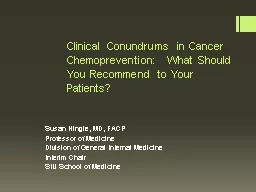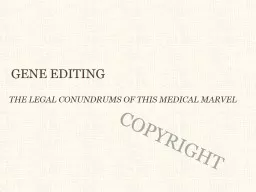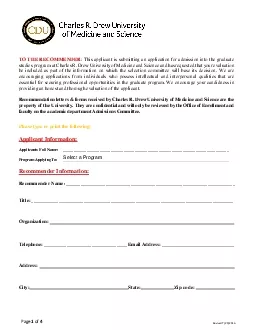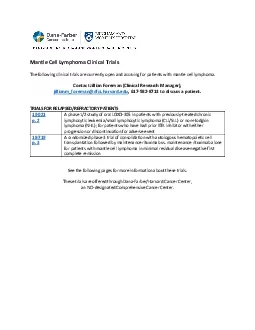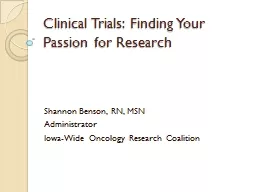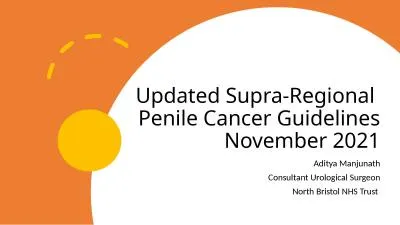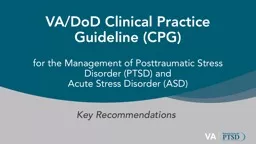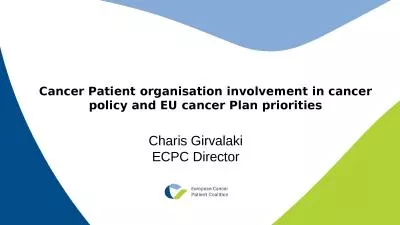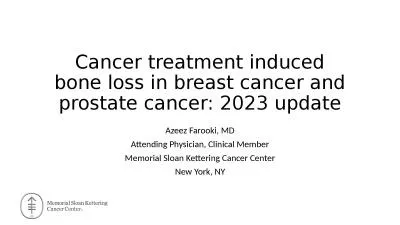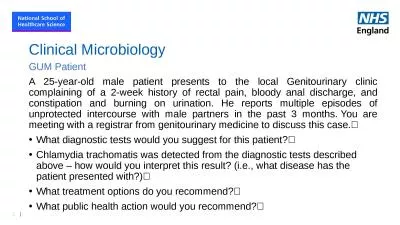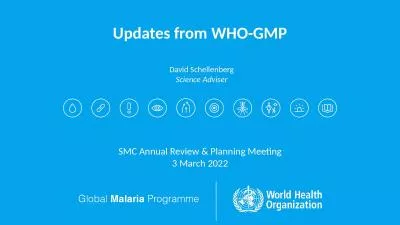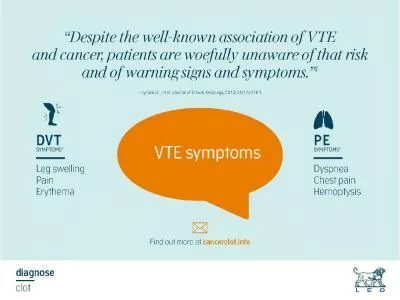PPT-Clinical Conundrums in Cancer Chemoprevention: What Should You Recommend to Your Patients?
Author : alexa-scheidler | Published Date : 2018-11-23
Susan Hingle MD FACP Professor of Medicine Division of General Internal Medicine Interim Chair SIU School of Medicine Session Objectives Identify the cancers in
Presentation Embed Code
Download Presentation
Download Presentation The PPT/PDF document "Clinical Conundrums in Cancer Chemopreve..." is the property of its rightful owner. Permission is granted to download and print the materials on this website for personal, non-commercial use only, and to display it on your personal computer provided you do not modify the materials and that you retain all copyright notices contained in the materials. By downloading content from our website, you accept the terms of this agreement.
Clinical Conundrums in Cancer Chemoprevention: What Should You Recommend to Your Patients?: Transcript
Download Rules Of Document
"Clinical Conundrums in Cancer Chemoprevention: What Should You Recommend to Your Patients?"The content belongs to its owner. You may download and print it for personal use, without modification, and keep all copyright notices. By downloading, you agree to these terms.
Related Documents

